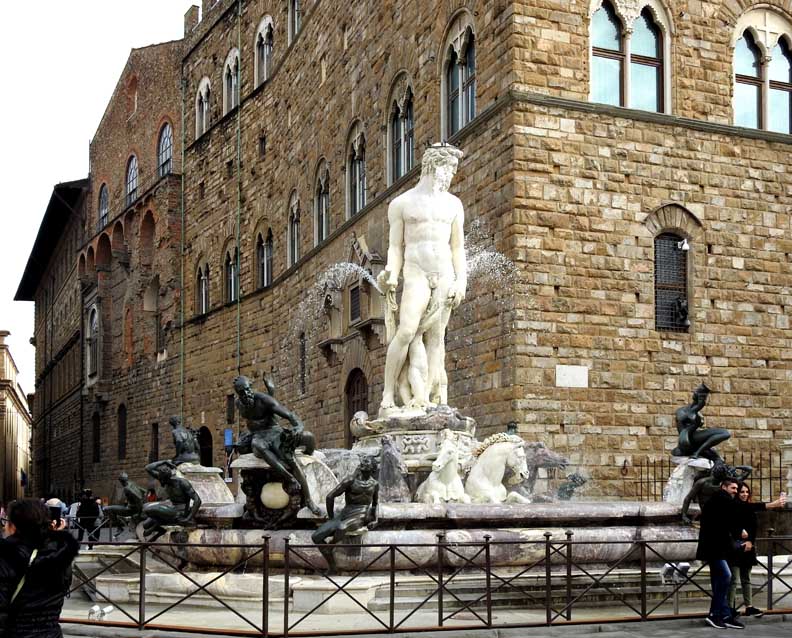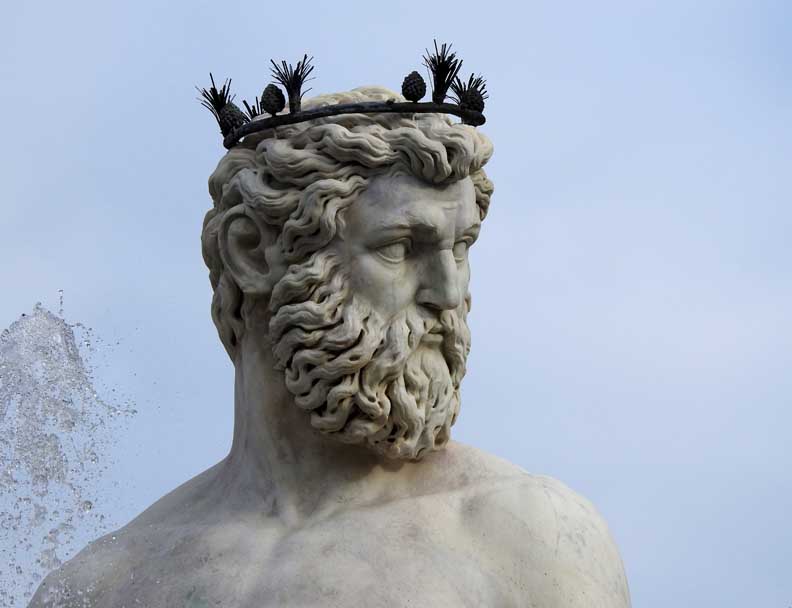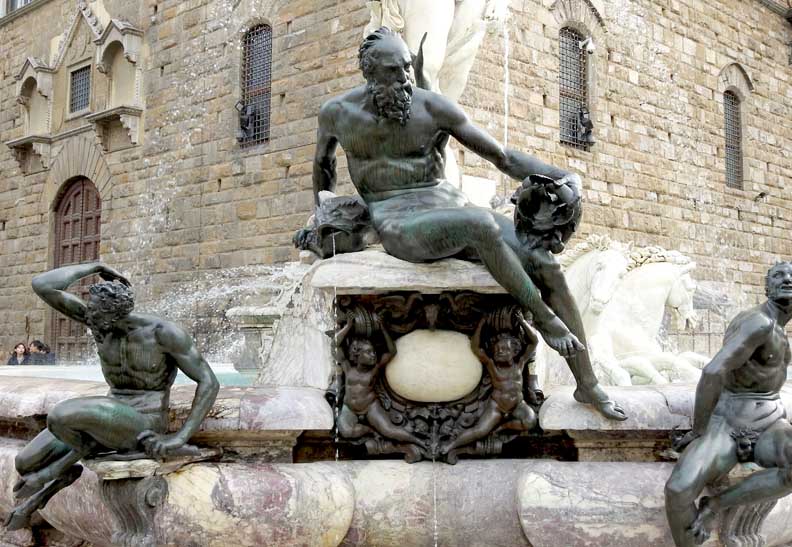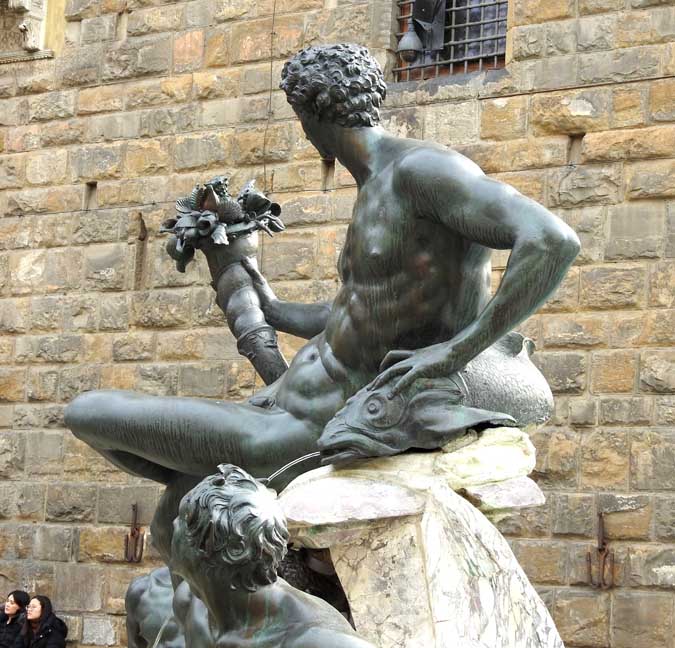Piazza della Signoria - Table of Contents....................... Architecture Around the World
Neptune Fountain
Piazza
della Signoria,
Florence, Italy
| Built: |
1565 |
| Architects: |
Designed
by Baccio
Bandinelli Sculptures by Bartolomeo Ammannati and Giambologna |
| Original name and function: |
Built to commemorate Medici Grand Duke Cosimo I's naval achievements. |
| Statues: |
Marble
and bronze |
| In 1559 Cosimo de’ Medici,
the grand duce of Florence, announced a competition for artists to win
the chance to design the very first public fountain in Florence.
The most famous artists of the time like Benvenuto Cellini, Baccio
Bandinelli and Giambologna took part in the competition. Of all
submitted proposals the one of Bartolomeo di
Ammannati was
chosen,
because his Neptune, the Greek god of the ocean, in Cosimo’s eyes was
the most suitable symbol for his successful fleet conquering the
arch-enemy Pisa and at the same time a proper allusion to the
foundation of the order of Saint Stephan with the purpose to fight the
Turks in the Mediterranean to obtain free transport routs for trade and
commerce. By constructing the new fountain on the west edge of the Palazzo Vecchio, Cosimo separated the Piazza in two areas. To provide the fountain with water it was necessary to lay a water pipe [aqueduct] all the way from the source of Ginevra downwards into the valley crossing the today’s Ponte alle Grazie up to the Piazza Peruzzi and to finally arrive at the Piazza della Signoria. Ammannati worked on the central statue of the fountain, the Neptune, in the years between 1560 and 1565. The figure is made from white marble from Carrara and its facial features remind strongly of Cosimo. The statue rises on a pedestal, which is decorated with the sea monsters from the Greek mythology Scylla and Charybdis and is surrounded by an octagonal basin. Some of the best sculptors of the city worked together for more then 10 years to model the basin. At Neptune’s feet you can find three amphibians that play on water spitting flutes. According to Greek mythology amphibians were seen as Neptune’s sons. Other then that they were also seen as the gods of the rivers. Usually they were portrayed with their upper body parts of a human being and their lower body parts of a fish. The basin includes also the 4 horses of Neptune pulling a wagon. On the wheels of the wagon you can see the signs of zodiac, which symbolize the passage of the time. On the edges of the basin you can recognize other gods from the Greek mythology, the sea gods Thetis, Doris, Oceanus and Nereus. - Museums Florence (online April 2020) |
 Building in background: Palazzo Vecchio, palace of Cosimo I who commissioned the fountain ... Four sea horses pull Neptune's chariot  White marble from Carrara, Italy ... The statue on display today is a copy made in the 1800s when the original was moved to the National Museum.  Face supposedly resembles Cosimo I who commissioned the fountain    Three of the four marble sea horses pulling Neptune's chariot ... Marble basin   Zodiac signs |